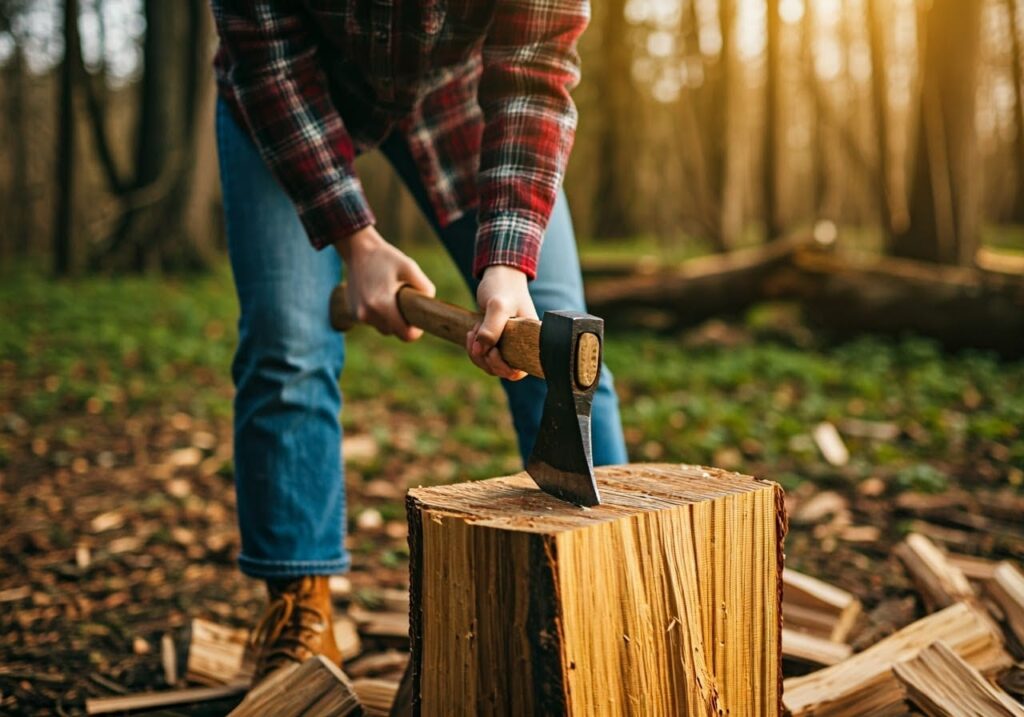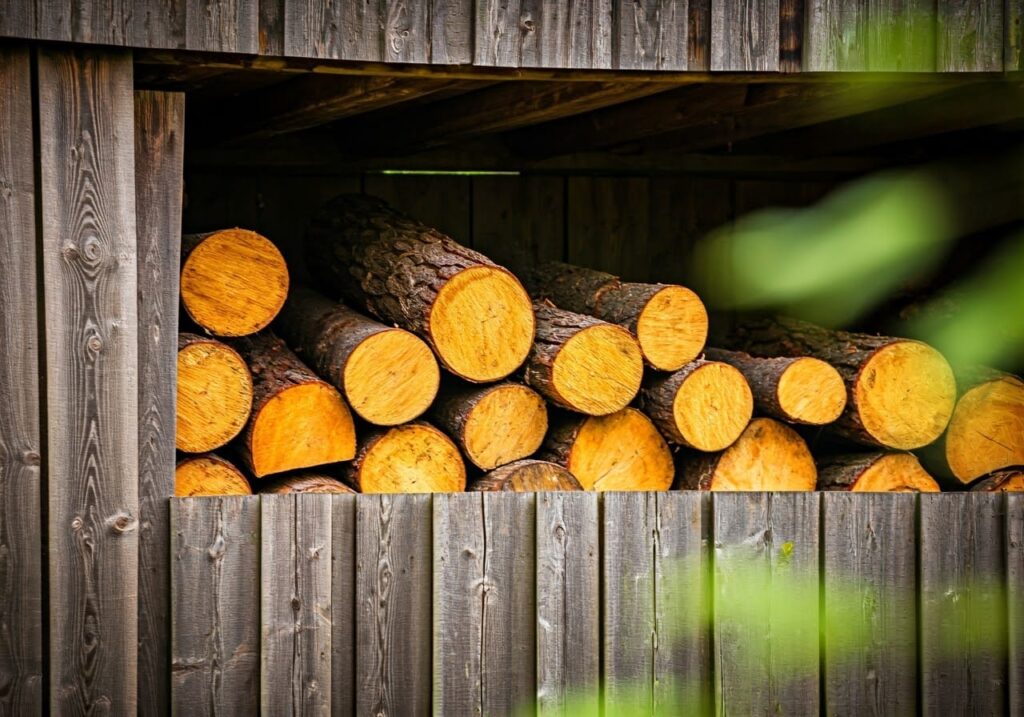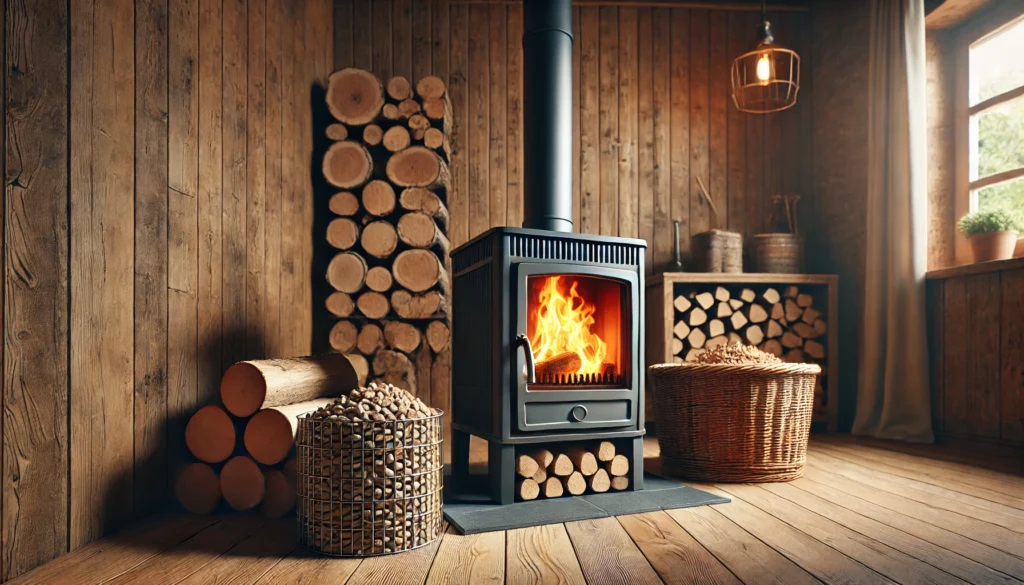Properly season firewood for efficient burning, maximum heat output, and maintaining the health of your wood stove. This comprehensive guide will walk you through the process of seasoning firewood effectively, ensuring you get the most from your wood heating system.

Understanding Wood Moisture Content
Fresh-cut wood can contain up to 50% moisture content, while properly seasoned wood should have 20% or less. This difference significantly impacts burning efficiency and heat output. Burning unseasoned wood wastes energy as it needs to evaporate excess moisture before producing heat, leading to more smoke, less heat, and increased creosote buildup in your chimney.
Wood Seasoning Time Requirements
| Wood Type | Minimum Seasoning Time | Optimal Moisture % | Split Size | Stack Height |
|---|---|---|---|---|
| Oak | 18-24 months | 15-20% | 6-8 inches | 4-5 feet |
| Maple | 12-18 months | 15-20% | 6-8 inches | 4-5 feet |
| Pine | 6-12 months | 15-20% | 4-6 inches | 4-5 feet |
| Birch | 9-12 months | 15-20% | 6-8 inches | 4-5 feet |
| Elm | 12-18 months | 15-20% | 6-8 inches | 4-5 feet |
The Seasoning Process Step by Step
1. Timing Your Wood Cutting
The best time to cut firewood is in late winter or early spring. This timing provides several advantages:
- Trees have lower sap content
- Spring and summer provide optimal drying conditions
- Wood has maximum time to season before winter use
2. Proper Splitting Techniques
Splitting wood is crucial for proper seasoning. The process exposes more surface area to air and sunlight, accelerating drying. Fresh-cut wood should be split immediately rather than stored in rounds. This approach:
- Creates more surface area for moisture evaporation
- Allows for better airflow between pieces
- Makes the wood easier to handle and store
- Helps prevent mold and fungal growth
3. Creating Optimal Drying Conditions
The key to effective seasoning lies in creating the right environment. Your wood storage area should have:
- Proper air circulation around and through the woodpile
- Protection from rain and snow
- Direct sunlight exposure when possible
- Elevation off the ground to prevent moisture absorption
Common Seasoning Mistakes to Avoid
Many wood burners make crucial mistakes during the seasoning process that can compromise their fuel quality. Here are the most common errors and how to avoid them:
Poor Storage Practices
Covering the entire woodpile with a tarp is one of the most common mistakes. While protection from precipitation is important, the wood needs airflow to dry properly. Instead:
- Use a roof-only covering that protects from above
- Keep sides open for air circulation
- Raise the bottom layer off the ground
- Create space between rows for air movement
Inadequate Splitting
Not splitting wood to the appropriate size can significantly extend drying time. Wood pieces should be:
- No larger than 6-8 inches at their widest point
- Split immediately after cutting
- Sized appropriately for your stove
Monitoring Moisture Content
Using a Moisture Meter
Investing in a good quality moisture meter is essential for accurate measurement. When testing:
- Split a piece of wood fresh from your stack
- Test the newly exposed surface
- Take readings from multiple points
- Average the results for accuracy
Visual and Physical Indicators
While a moisture meter provides the most accurate results, experienced wood burners can often recognize well-seasoned wood through various indicators:
- The wood develops visible cracks or splits at the ends
- Bark becomes loose or falls off easily
- The wood’s color typically darkens
- Pieces feel lightweight compared to fresh-cut wood
- Wood makes a clear ringing sound when knocked together
Seasonal Considerations
Summer Seasoning
- Maximum sun exposure
- Faster drying times
- Higher risk of checking (cracking)
- Need for rain protection
Winter Seasoning
- Slower drying process
- Less biological degradation
- Protection from snow crucial
- Limited sun exposure
Advanced Seasoning Techniques
For those seeking optimal results, consider these advanced methods:
Solar Kiln Drying
Creating a simple solar kiln can accelerate the seasoning process by:
- Increasing air temperature around the wood
- Controlling humidity levels
- Protecting from precipitation
- Maintaining consistent drying conditions
Stacking Patterns
Experiment with different stacking patterns to optimize airflow:
- Traditional row stacking
- Holz Hausen method
- Cross-stacking ends
- Single-row exposed stacking
Conclusion
Proper wood seasoning is both an art and a science. While it requires patience and proper technique, the rewards of well-seasoned firewood are worth the effort. Remember that different wood species have varying seasoning requirements, and environmental conditions play a significant role in the process. By following these guidelines and being patient, you’ll ensure your firewood provides maximum heat output and efficient burning in your wood stove.


